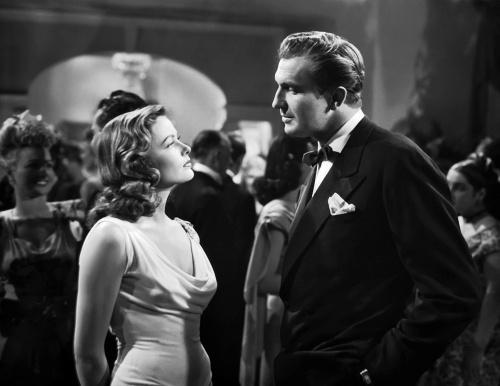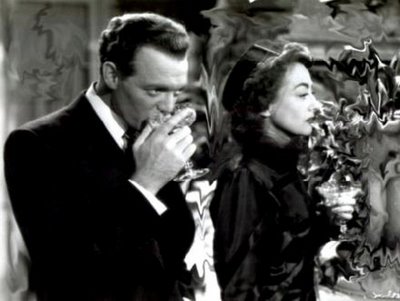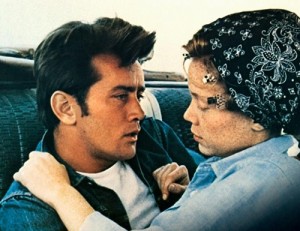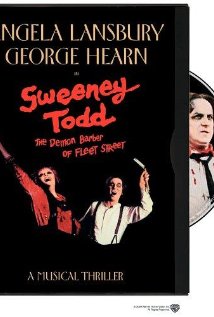By Film Noir Blonde and Mike Wilmington
The Film Noir File is FNB’s guide to classic film noir, neo-noir and pre-noir on Turner Classic Movies (TCM). All movies below are from the schedule of TCM, which broadcasts them uncut and uninterrupted. The times are Eastern Standard and (Pacific Standard).
Pick of the Week
Happy Birthday, Otto Preminger (1905-1986)
Friday, Dec. 5

During the filming of “Angel Face,” Robert Mitchum bonded with Jean Simmons when he came to her defense against Preminger’s mistreatment.
His nickname was “Otto the Ogre.” He was one of the most colorful and feisty of all the star Golden Age Hollywood directors. His verbal abuse of actors, including beautiful actresses and children, was legendary.
But Otto Preminger – known for his hot temper, thick German accent, bald bullet head, defiance of taboos and long camera takes – was also one of the czars of film noir in the 1940s and early ’50s, when he directed classics like “Laura,” “Where the Sidewalk Ends” and “Angel Face.” Later on, he made one of the best of all trial dramas, 1959’s “Anatomy of a Murder,” and directed the neglected 1965 British thriller “Bunny Lake is Missing.”
Read the rest of the story here.
6:15 a.m. (3:15 a.m.): “The Human Factor” (1970). Preminger’s last film – a faithful adaptation of Graham Greene’s dark, knowing novel about a British defector/putative spy (Nicol Williamson) – has a good, smart script, inspired by the Kim Philby case, written by playwright Tom Stoppard. The top cast includes Derek Jacobi, Richard Attenborough, Iman, John Gielgud and Robert Morley. But it suffers from a parsimonious budget and Otto’s declining film fortunes.
8:15 a.m. (5:15 a.m.) “Advise and Consent” (1962). With Henry Fonda, Charles Laughton, Don Murray, Walter Pidgeon, Gene Tierney, Burgess Meredith and Franchot Tone. Reviewed in FNB on Dec. 4, 2013.
 12:45 p.m.: (9:45 a.m.): “The Man with the Golden Arm” (1955) As a man struggling to give up his heroin habit, Frank Sinatra leads a superb cast in this riveting adaptation of Nelson Algren’s novel. Kim Novak plays his ex-girlfriend. Sinatra earned a Best Actor Oscar nom; the film’s music (by Elmer Bernstein) and art direction-set decoration also were considered for Oscars. With Eleanor Parker and Darren McGavin.
12:45 p.m.: (9:45 a.m.): “The Man with the Golden Arm” (1955) As a man struggling to give up his heroin habit, Frank Sinatra leads a superb cast in this riveting adaptation of Nelson Algren’s novel. Kim Novak plays his ex-girlfriend. Sinatra earned a Best Actor Oscar nom; the film’s music (by Elmer Bernstein) and art direction-set decoration also were considered for Oscars. With Eleanor Parker and Darren McGavin.
4:45 p.m. (1:45 p.m.): “Angel Face” (1953). With Robert Mitchum, Jean Simmons and Herbert Marshall.
6:30 p.m. (3:30 p.m.): “Laura” (1944). With Gene Tierney, Dana Andrews, Clifton Webb, Judith Anderson and Vincent Price.
Other non-noir Premingers shown on his birthday are his two well-made stage adaptations: George Bernard Shaw’s historical drama “Saint Joan” (1957), scripted by Greene, with Jean Seberg, Richard Widmark and Anton Walbrook at 10:45 a.m. (7:45 a.m.) and F. Hugh Herbert’s controversial sex comedy “The Moon is Blue” (1953), with William Holden, Maggie McNamara and David Niven, at 3 p.m. (12 p.m.). Both are worth a look.
Sunday, Dec. 7
8 a.m. (5 a.m.): “The Lady Vanishes” (1938, Alfred Hitchcock). With Michael Redgrave, Margaret Lockwood, Dame May Whitty and Paul Lukas.


















![sophia-loren-afi-tribute[1]](http://www.filmnoirblonde.com/wp-content/uploads/2014/11/sophia-loren-afi-tribute11.jpg)



















From FNB readers